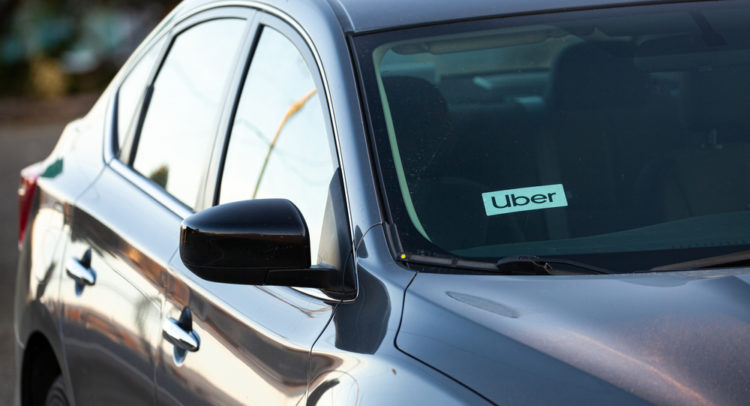Uber Technologies, Inc. (UBER) is a San Francisco, California-based transportation networking company that offers a ride-hailing service, food order, and delivery business called Uber Eats, and a freight transportation business called Uber Freight. It was founded in 2009.
Shares of Uber Technologies have losses of approximately 26% in 2021 and 11% within the last month. I am bearish on UBER stock, as it is too risky to expect it may bottom soon, given that its business fundamentals remain weak.
Uber Business News
Uber has announced several recent business developments. First, Uber announced on November 17, 2021, that it has a new membership service, Uber One, offering a series of exclusive perks, priority service on rides, and special member pricing both for rises and delivery orders. The cost is $9.99 per month or an annual price of $99.99, and there was a 50% special promotion for early subscribers.
Additionally, Uber Freight announced in mid-November that it has completed the acquisition of Transplace for approximately $2.25 billion in an all-cash transaction.
What are some risks related to Uber’s business model now? There are two notable factors worth to be mentioned. First, the EU has drafted new employee rules for gig workers, aiming to give workers on online platforms like Uber the right to a minimum wage, and other important benefits such as paid holidays and pension rights. The proposals essentially may designate gig workers as employees, which will make a huge difference to the business. If online platforms such as Uber have to fund pension plans and other benefits, they will incur expenses that will increase their operating costs substantially.
These proposals, if passed, will take a long time to be put into effect, as all EU members have to decide and vote on them. Still, Uber seems to oppose them from the very beginning.
An Uber spokesman stated, “We have worked with national governments across Europe and the rest of our industry on ways to strengthen platform work without risking the flexibility independent workers say they want. But we are concerned the Commission’s proposal would have the opposite effect – putting thousands of jobs at risk, crippling small businesses in the wake of the pandemic and damaging vital services that consumers across Europe rely on.”
The second key risk for Uber is the large investments in robotaxis and autonomous vehicles made by other giants, such as Alphabet (GOOGL), Amazon (AMZN), and General Motors (GM), to name a few. If the future is about self-driving cars, Uber will have to compete with these technology companies and offer better value to its members and customers. A simple scenario of a pricing war would exercise pressure on Uber’s margins, for example if it has to compete with General Motors.
Undoubtedly, this regulation would create a serious risk for the ride-hailing industry.
Third-quarter Financial Results: First-ever Adjusted EBITDA Profit
Uber reported mixed third quarter financial results.
On the positive side, revenue grew 72% year-over-year to $4.8 billion, gross bookings grew 57% year-over-year, and adjusted EBITDA of $8 million was the first-ever adjusted EBITDA the company reported. Furthermore, active U.S. mobility drivers were up nearly 60% year-over-year in the third quarter as the vaccination program is addressing the pandemic problem, although the Omicron variant is an unknown factor.
On the negative side, Uber continues to lose money, reporting a loss of $2.4 billion, which was attributed primarily to the poor financial performance of its investment holding in DiDi Global Inc. (DIDI).
Reasons for concern are the lack of consistency related to profitability, the cash burn, and stock dilution as total shares outstanding grew by 10% in the last year. The first-ever positive adjusted EBITDA is a milestone, but I would like to see it become sustainable. Additionally, total costs and expenses in Q3 2021 rose to $5.4 billion compared to $3.9 billion in Q3 2020. Operating loss narrowed in Q3 2021 to ($572 million) from ($1,116 million) in Q3 2020.
Uber must control its costs and deliver net profits, as it did in Q2 2021, and show consistency in profitability and positive free cash flow. As long the consistency is absent, the business model of Uber is fragile.
Investors have taken notice of this lack of momentum in financial performance. On the valuation note, data from Simply Wall Street shows that UBER is overvalued based on its PB Ratio (5x) compared to the U.S. Transportation industry average (2.4x).
Wall Street’s Take
Uber has a Strong Buy consensus, based on 19 Buys and 1 Hold ratings. The average UBER price target of $69.55 represents an 75.3% upside potential.

Disclosure: At the time of publication, Stavros Georgiadis, CFA did not have a position in any of the securities mentioned in this article.
Disclaimer: The information contained in this article represents the views and opinion of the writer only, and not the views or opinion of TipRanks or its affiliates Read full disclaimer >









